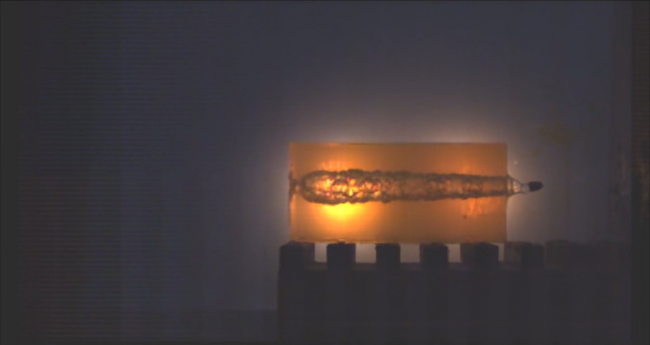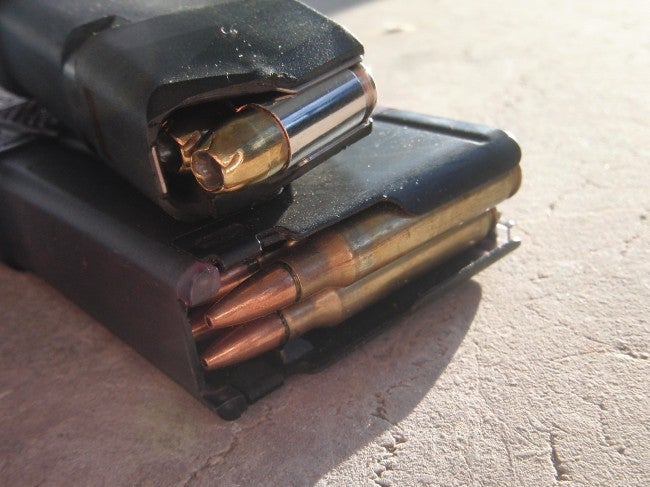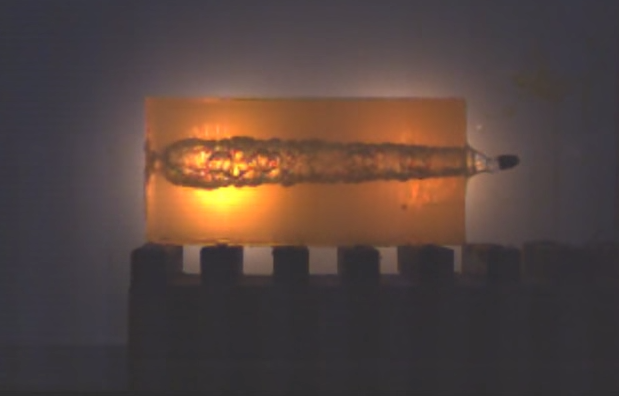The views expressed in this opinion article are those of the author, not TheFirearmBlog.com, or anyone else.
Energy is a pretty hot quantity in the firearms industry: Guns in new calibers are marketed by how much more energy they produce than the competition, prospective owners weigh the benefits and drawbacks of rifles firing more expensive but more powerful ammunition, and everyone knows a deer hunter that brings out an anti-tank rifle every season.
Using appropriately powerful ammunition for a given task is important, of course. However, thanks to the marketing efforts of companies trying to differentiate themselves by offering rifles chambered in new calibers, the importance of energy with regards to terminal effect – especially in military or self-protection applications, has been inflated. Further, some advertisements may lead one to believe that energy is the end of the story regarding terminal effect. Proudly advertised figures of muzzle energy or energy retained at range in some cases mask other shortcomings of new ammunition. I don’t intend for this op-ed to be very long; I’m only going to explore a couple of aspects of terminal effect pertaining to energy that some TFB readers might not have thought about before.
First, it’s important to remember that the foremost characteristic that should be on your mind when selecting new ammunition is bullet design. A poorly chosen bullet in a powerful caliber will more surely lead to frustration and failure than a marginal caliber packing the right payload. A good example of this is the success and failure some hunters had in the late 1930s and early ’40s with the then-new high velocity .220 Swift. Initial use by experienced hunters produced excellent results, but subsequent failures of the round with early soft-point bullets pushed too fast cost the caliber much of its good reputation. Today, medium sized game such as hogs are routinely culled with much less powerful 5.56mm or .223 caliber rifles firing much more appropriate, heavier projectiles launched at more modest velocities.
.223/5.56mm is a popular hog hunting round, and – with proper bullet selection – works very well on medium sized game if the hunter does his part.
A good example of how energy does not tell the whole story is given by a comparison between two subsonic rounds used in suppressed applications: The .45 ACP, which has been in use for this purpose since the 1940s at least, and the .300 AAC Blackout – a newcomer to the suppressed rifle game. On the surface, and in AAC promotional material, the .300 Blackout is decidedly superior to the .45 ACP; with its long, slender high sectional density bullets it produces 30-35% more energy than .45 ACP over its effective range. However, this doesn’t tell the whole story. When their terminal effect in gelatin is compared, it’s difficult to tell the difference for the first foot or two of bullet travel.

.300 AAC Blackout 220 grain subsonic OTM at 1,000 ft/s produces a long, stable wound channel without upset within the first 24″. Source: TWANGnBANG’s YouTube channel, https://www.youtube.com/watch?v=i1Q7xRmZAtk

.45 ACP 230 grain hardball, at 780 ft/s, creates a very similar wound channel to the .300 AAC Blackout, despite producing three-quarters the muzzle energy. A human foe hit with either round would most likely have a similarly unpleasant experience. Source: BrassFetcher’s YouTube channel, https://www.youtube.com/watch?v=3G-txVKnVjY
A further example of this can be found in another BrassFetcher video, comparing different carbine cartridges with each other. Despite the larger caliber cartridges’ greater muzzle energy than 5.56mm, for the first half of projectile travel, energy deposition and temporary cavitation look nearly identical. This early segment of travel is the most important when discussing terminal effectiveness against human foes:
Even though the first three rounds tested have identically constructed bullets, the 5.56mm still dumps the overwhelming majority of its energy earlier, while the latter two rounds “save” more of their energy for later in their travel. This is because of the former’s lower sectional density and higher velocity. Against human targets, we being a relatively thin-bodied species, it would be difficult to distinguish the effects of all three rounds, while against wider-bodied animals one might see a dramatic difference in their effectiveness.
Thus, the energy a round produces at a given range is demonstrated to only inform an “energy budget”, i.e., the maximum amount of expendable energy it has to offer. Two cartridges producing very different levels of energy may have a similar effect on a target, if bullet construction and velocity permit. Conversely, two cartridges producing similar levels of energy could also have vastly different effects. What this means for the buyer is that the energy produced by a given cartridge-rifle system only matters inasmuch as it provides enough energy budget for a given task, with available projectiles. For home defense, as an example, it may be more prudent to buy a weapon chambered for a weaker round, but that has superior bullet selection and ammunition availability, than to buy one in a more powerful, but less flexible chambering.

The author uses a Glock handgun in 9mm, and an AR-15 pattern rifle in 5.56mm for home protection. Despite both being on the lower end of the power spectrum in their respective classes, the author has chosen effective, inexpensive rounds in those calibers, and does not worry about being unable to stop a threat.
For some readers this article will tell them nothing new – they’ve known for years to use enough gun, and no more. For others, including those I’ve bumped into in virtual and real life, I am hoping this article provides enough for them to examine their needs and make an economical and effective decision regarding their next purchase.
 Your Privacy Choices
Your Privacy Choices
